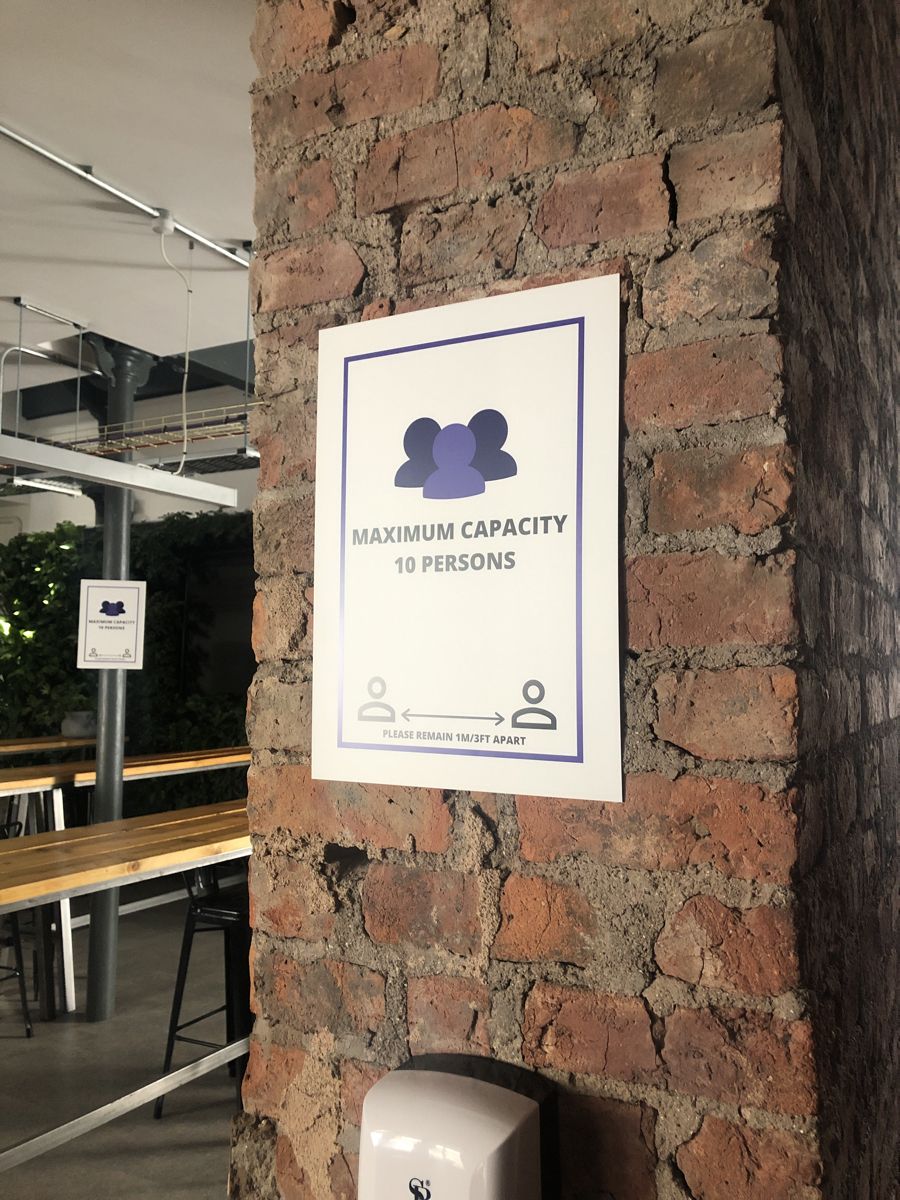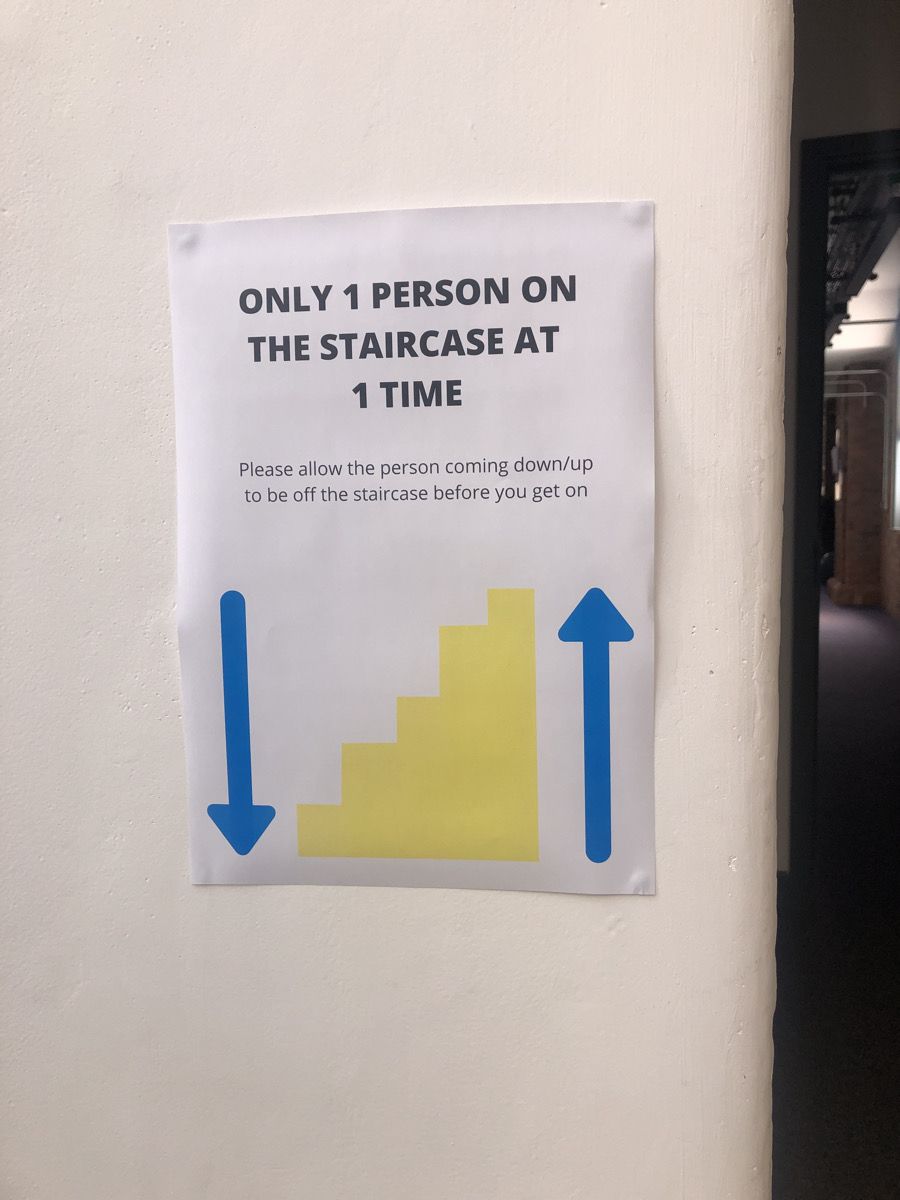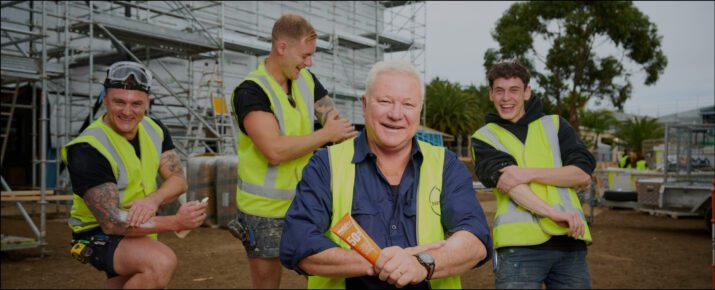How we’re getting our Manchester office back to work
Industry Trends | By | 30 Jun 2020 | 3 minute read

Since COVID-19 took hold, businesses in every city have had to reassess the way we work and interact.
The global pandemic has significantly disrupted all aspects of modern life, and it’s safe to say things will never quite operate in the same way again – at least for now!
But how do businesses get back to work in a safe and healthy way?
Our office in Manchester, UK, was one of the first Safety Culture offices to reopen.
Making sure we managed risk and kept our employees safe was our number 1 priority.
With new social distancing and hygiene measures in place, we had to take a new approach to make sure our Manchester office was compliant with government measures.
As restrictions lifted, we wanted to make sure that our staff felt safe and relaxed coming back to work. It’s a tentative time for everyone, as we all adapt to the ‘new normal’.
We did this by starting with a thorough risk assessment, using iAuditor checklists.
Here’s how my team at SafetyCulture approached the re-opening of our Manchester branch in the UK.
Conducting a risk assessment for our Manchester office
In the UK, government guidelines stipulate that companies with 50+ employees complete a risk assessment, which should be shown to staff and shared online.
We conducted a risk assessment at our Manchester Branch, using our iAuditor app. It was simple to collect information and capture evidence using photos to assess the risk and showcase it online to staff and members of the public.

So how did we begin?
First, we assigned someone to champion the office reopening.
Laura owned the risk assessment checklist, and worked hard to ensure every aspect of office life was adequately assessed and changed in line with government advice. “We had to shut the office down fast but we had to re-open even faster (and 100x safer). The safety of my crew is my number one priority so completing the risk assessment and the UK Gov working safely checklist was crucial in the re-opening process. Being able to share the results with the team was reassuring for not only myself but for them to know they’re returning to a safe workplace”, says Laura.

Keeping our space clean
Next, we looked at how we could raise hygiene levels throughout the building.
The measures we took included:
- Offering hand sanitizers throughout the office space
- Putting up posters and stickers to advise on hand washing and sanitization guidelines
- Identified commonly used areas and advised cleaners to increase deep cleaning for those areas
- Increased cleaning frequency of all public areas



Maintaining distancing measures
We also looked at social distancing measures, and assessed how necessary it was for people to be in the building, and how to keep interaction levels to a minimum.
The ways we did this were by:
- Letting our staff know that it is completely optional to work from the office up until October. We let people into the Manchester office on a phased approach – inviting people who felt it was critical to work from the office, and then people who didn’t mind either way, with the view to eventually invite everybody back in.
- Rearranged desks and equipment to meet distancing requirements
- We placed capacity limits in meeting rooms, elevators, common areas and stairwells.



Continued transparency with staff
We wanted to make sure that our employees felt comfortable, but were also completely informed of the new measures surrounding COVID-19.
In order to mitigate risk, there were a few things we needed to communicate to our teams.
In our Manchester office, we:
- Encouraged sick people to stay home, even if their symptoms were mild
- Allowed flexible working arrangements until there is more certainty around COVID-19 information – including working from home and flexible starting times to avoid peak hour travel
- Created a spreadsheet for employees to fill out to understand which employees are in the office each day, in order to make contact tracing easier if a case is contracted
- Asked staff to fill out a return to work form on iAuditor to understand what’s expected of them.

Keeping safe with digital checklists
I personally feel fortunate to work at SafetyCulture, which intrinsically promotes a culture of safety. Now it’s on every business owner’s minds.
Here at SafetyCulture, we know that checklists keep us safe, which promotes a sense of wellbeing. After all, we want to get back to work, and feel good about it!
By using iAuditor in our Manchester office, we kept everything in one place. By logging and monitoring all types of risk, this digital checklist can be viewed by every member of staff.
These types of online checklists can help us most when getting safely back to work, as we can show other offices what measures we have put in place to ensure a clean work environment.
It also means our Manchester staff came back with less concern, as they understood we had managed and monitored every possible risk.
Businesses can implement all of these steps with an easy to use Risk Assessment checklist.
Here’s our template we used for the Manchester office.
Important Notice
The information contained in this article is general in nature and you should consider whether the information is appropriate to your specific needs. Legal and other matters referred to in this article are based on our interpretation of laws existing at the time and should not be relied on in place of professional advice. We are not responsible for the content of any site owned by a third party that may be linked to this article. SafetyCulture disclaims all liability (except for any liability which by law cannot be excluded) for any error, inaccuracy, or omission from the information contained in this article, any site linked to this article, and any loss or damage suffered by any person directly or indirectly through relying on this information.





